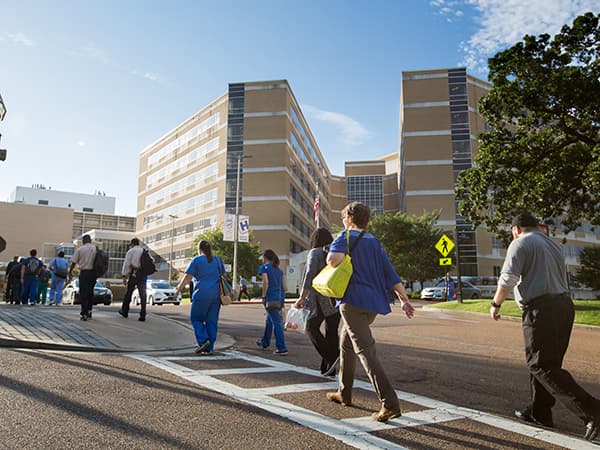Surveys seek frank feedback from employees on workplace, safety

UMMC employees last summer told their leadership just what they think about working here and how safe it is for them and patients – and senior leaders took steps to address their concerns.
Today through August 7, the Medical Center family’s voices will be heard anew through the 2017 Employee Engagement and Culture of Safety survey. The confidential survey will again be administered by Press Ganey, a national firm that uses data-driven surveys and a “listen and learn” approach to improve the employee and patient experience.
“Our employees make us who we are,” said Guy Giesecke, CEO of Children’s of Mississippi. “This is why we view employee engagement to be key to our success. Buildings are important, standards are critical, but the best strategy for creating great patient experiences and delivering high-quality, patient-centered care is through the hands and hearts of engaged people."
All employees will receive an email today from Press Ganey inviting them to take part. The results will be used to drive more initiatives to help UMMC achieve its goal of becoming an employer of choice.
The voluntary survey is divided into two sections, employee engagement and culture of safety. The email from Press Ganey includes a unique link to the survey that takes about 20 minutes. Employees should not forward their email, because its unique link can only be used by one person.
Only employees in the clinical health care setting will take both the employee engagement and culture of safety surveys. Contracted health system staff in environmental services, food services, and laundry will only take the culture of safety survey. And employees taking both will first be given the culture of safety survey, followed by the employee engagement survey.
In July 2016, UMMC employees, including at clinics statewide and hospitals in Grenada and Holmes County, took both of the surveys asking their perceptions of their workplace. It included questions on the Medical Center's culture of safety, asking participants if they feel it's safe to be a patient here and how their jobs impact safety. Details can be found at UHHS Employee Engagement 2016 Improvement Plan and Accomplishments and at UHHS 2016 100 Day Workout on Employee Engagement. You must be logged into the UMMC network to view them.
UMMC had a participation rate of 76 percent – topping Press Ganey’s national average rate of 74 percent. The survey revealed both challenges and opportunities in the key areas of communication, respectfulness, professional development, awards and recognition, patient and employee safety, and patient and employee experience.
The lowest scores came when employees evaluated these points:
- This organization treats employees with respect.
- My pay is fair compared to other health care employers in this area.
- This organization makes employees in my work unit want to go above and beyond.
- Patient safety is a priority in this organization.
- This organization makes every effort to deliver safe, error-free care to patients.
Those and many more 2016 survey concerns have been addressed – and action plans made -- by multidisciplinary teams of employees taking part in a 100 Day Workout. The workout is a nationally recognized quality improvement methodology that brings together groups of employees to tackle performance, quality, safety or other issues.
“As an organization, we need to know what we are doing well and where we have opportunity to improve, said Liz Youngblood, CEO of adult hospitals. “This helps us to develop and maintain an outstanding work environment for our team.”
Among the steps taken: Senior leaders put together focus groups to speak frankly about issues with respect and give administrators ideas on how to fix it: Stop and listen to staff while rounding. Treat employees equally, whether clinical or non-clinical, and regardless of differences in job function. Eliminate favoritism.
And, UMMC leadership worked with Human Resources to analyze where the Medical Center falls short on offering competitive pay. Plans are being laid that will allow UMMC to bridge that gap, and to move toward a pay-for-performance methodology.
“The shift to value-based purchasing, which ties a system’s Medicare and Medicaid reimbursements to the quality of the services it provides, requires improvement in clinical processes and patient experience,” said Chief Medical Officer Dr. Michael Henderson. That outcome, he said, depends heavily on the commitment, dedication and skills of a hospital’s employees who have an enormous impact on the overall patient experience.
UMMC managers and administrators won't know who did or did not take part and won't have access to individual survey responses, but they will know how many total employees participated.
A new 100 Day Workout specific to the new survey results will begin in October. More front-line employees will be asked to serve on the workout teams, and unit and department supervisors will work to help support and promote their staff’s participation.
“We are thankful to have such highly engaged, enthusiastic and compassionate employees,” said Chief Nursing Executive Officer Terri Gillespie. “We know that these factors contribute to an enhanced experience and improved care delivery for the patients we serve.”


